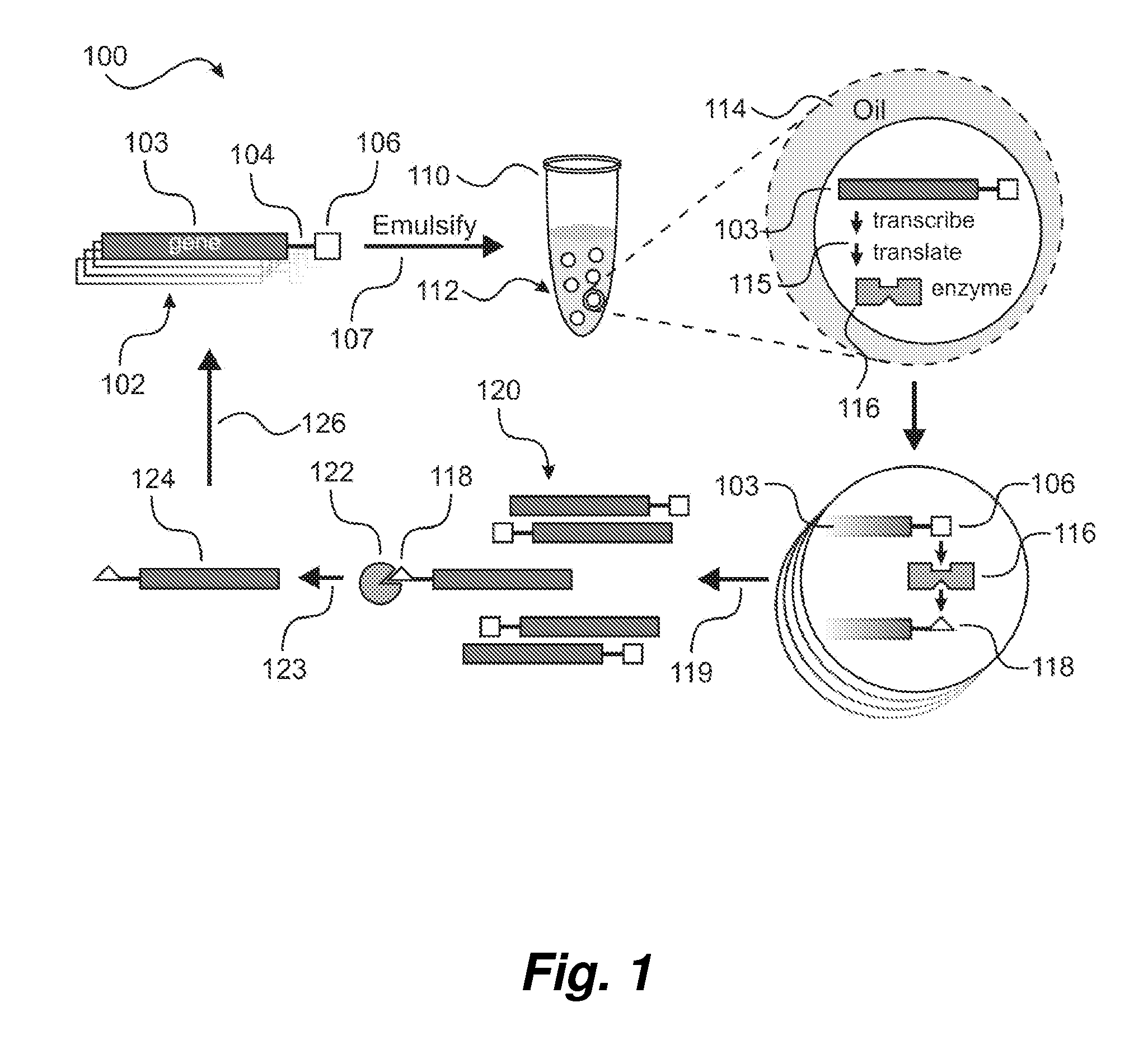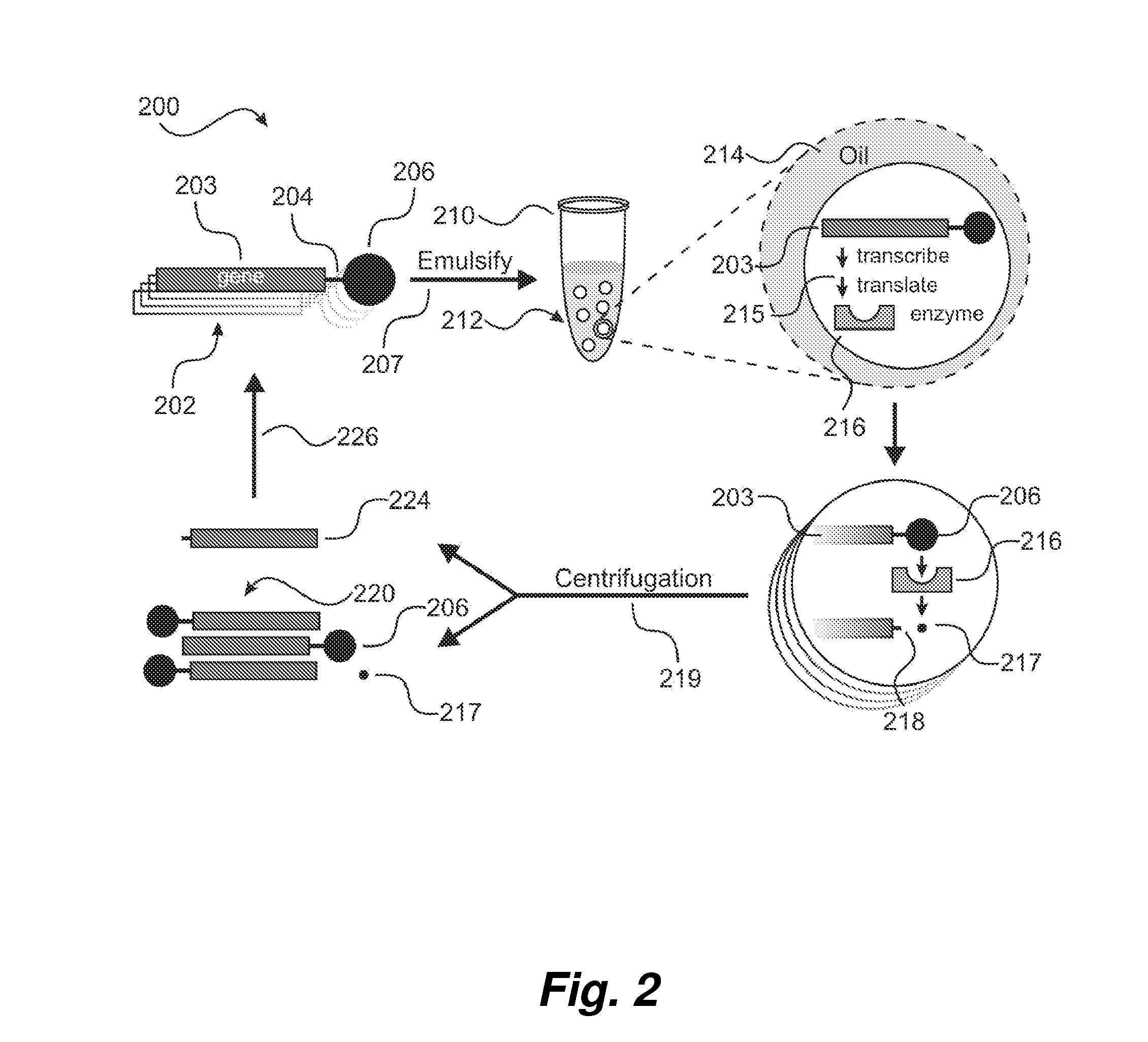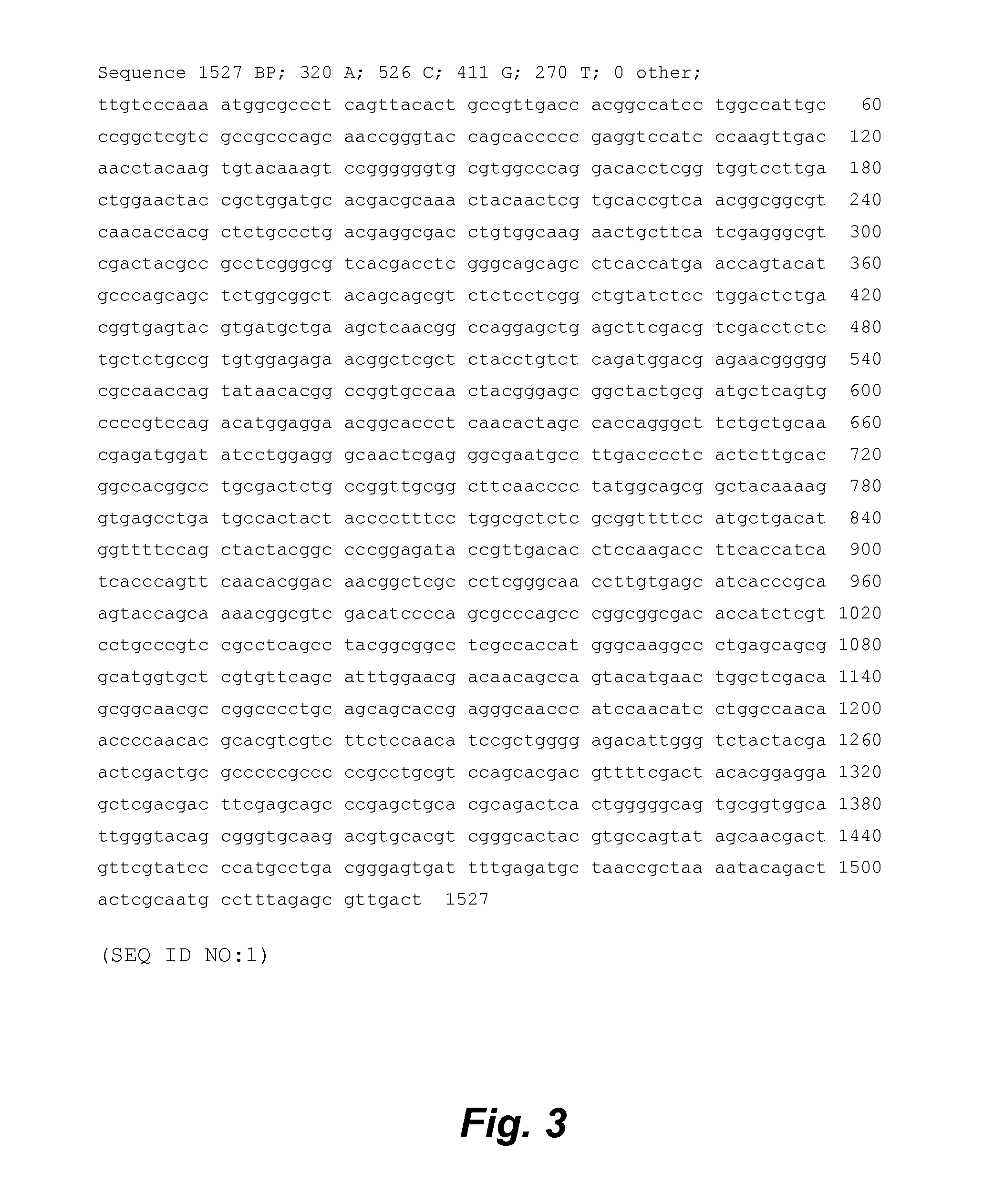Method of enhancing enzyme activity
a technology of enzyme activity and enzyme activity, applied in the field of enzyme enhancement, to achieve the effect of optimizing the enzymatic activity
- Summary
- Abstract
- Description
- Claims
- Application Information
AI Technical Summary
Benefits of technology
Problems solved by technology
Method used
Image
Examples
Embodiment Construction
Definitions
[0016]Terms used in the claims and specification are defined as set forth below unless otherwise specified.
[0017]The term “polynucleotide” refers to a deoxyribonucleotide or ribonucleotide polymer, and unless otherwise limited, includes known analogs of natural nucleotides that can function in a similar manner to naturally occurring nucleotides. The term “polynucleotide” refers to any form of DNA or RNA, including, for example, genomic DNA; complementary DNA (cDNA), which is a DNA representation of messenger RNA (mRNA), usually obtained by reverse transcription of mRNA or amplification; DNA molecules produced synthetically or by amplification; and mRNA. The term “polynucleotide” encompasses double-stranded nucleic acid molecules, as well as single-stranded molecules. In double-stranded polynucleotides, the polynucleotide strands need not be coextensive (i.e., a double-stranded polynucleotide need not be double-stranded along the entire length of both strands).
[0018]Polynu...
PUM
 Login to View More
Login to View More Abstract
Description
Claims
Application Information
 Login to View More
Login to View More - R&D
- Intellectual Property
- Life Sciences
- Materials
- Tech Scout
- Unparalleled Data Quality
- Higher Quality Content
- 60% Fewer Hallucinations
Browse by: Latest US Patents, China's latest patents, Technical Efficacy Thesaurus, Application Domain, Technology Topic, Popular Technical Reports.
© 2025 PatSnap. All rights reserved.Legal|Privacy policy|Modern Slavery Act Transparency Statement|Sitemap|About US| Contact US: help@patsnap.com



